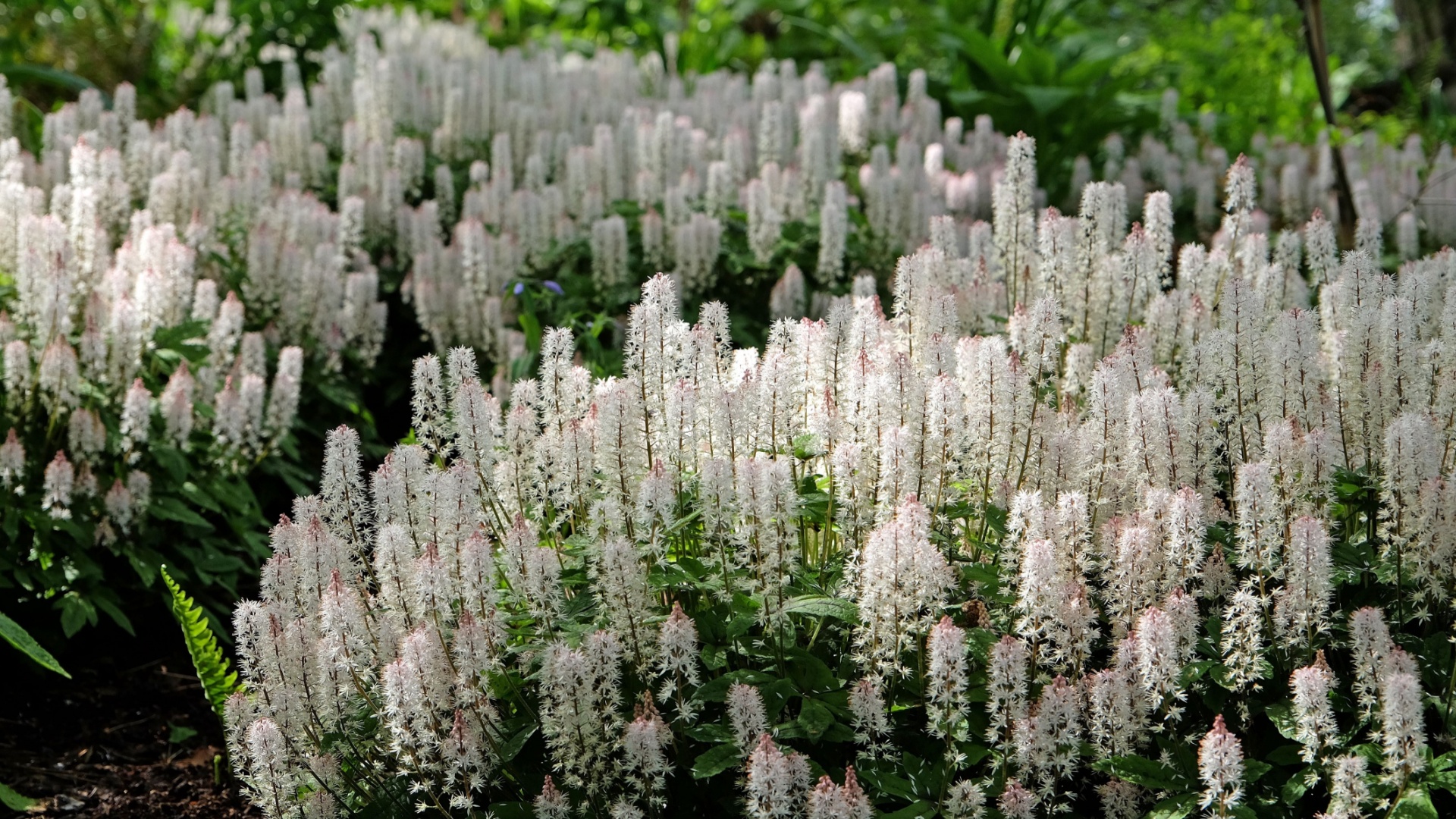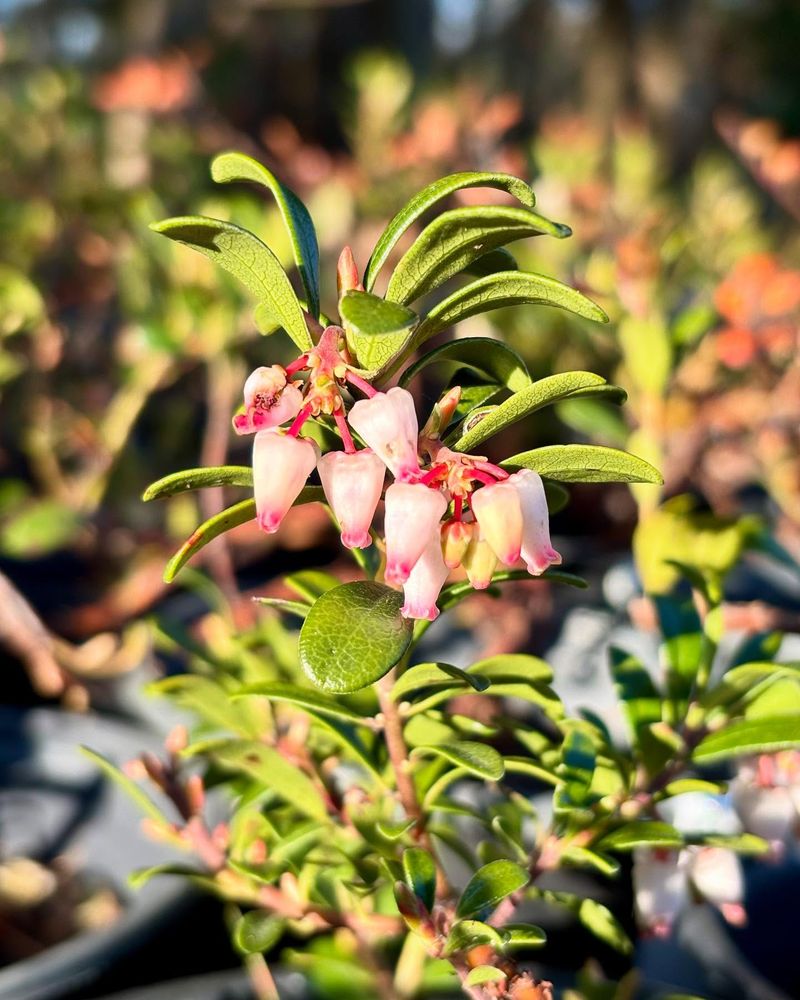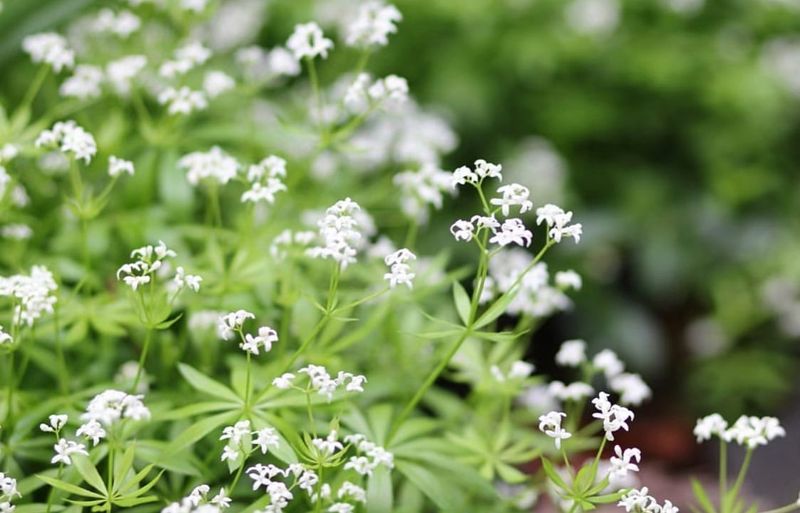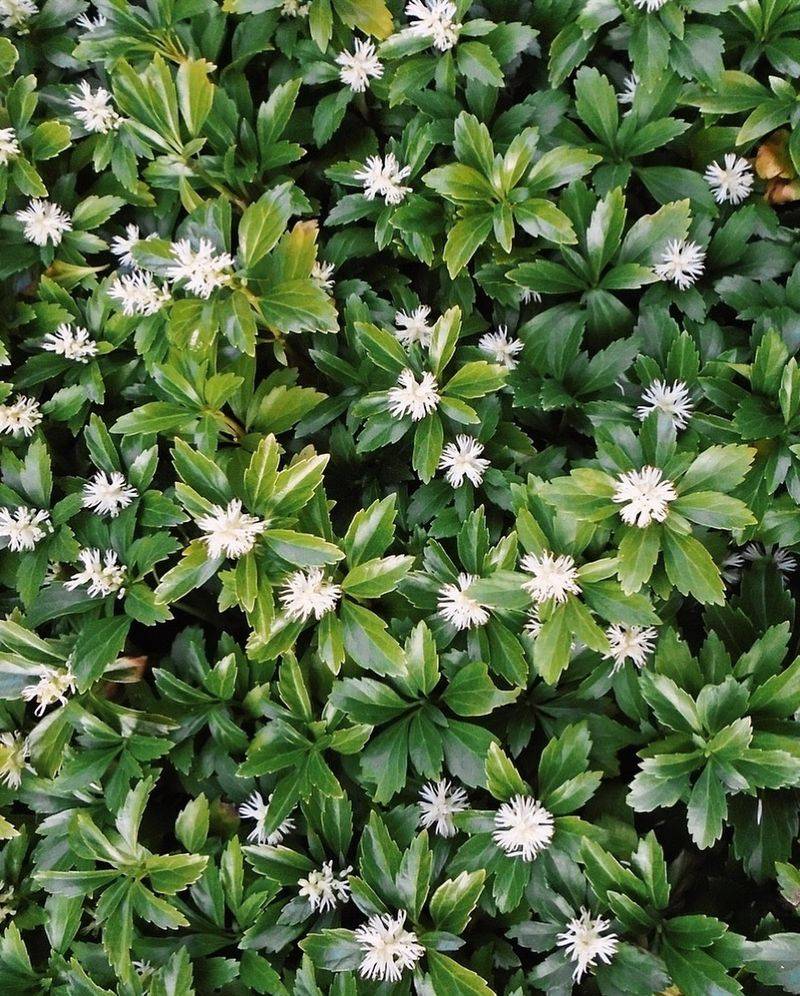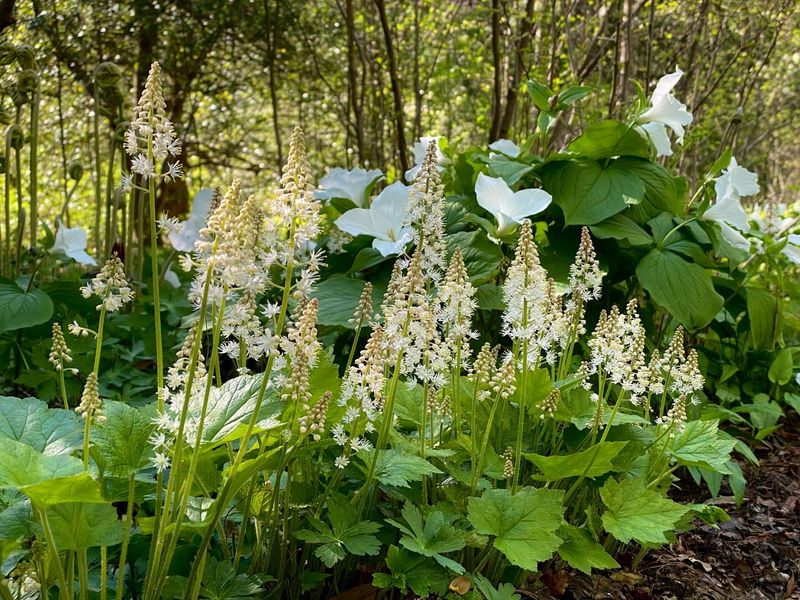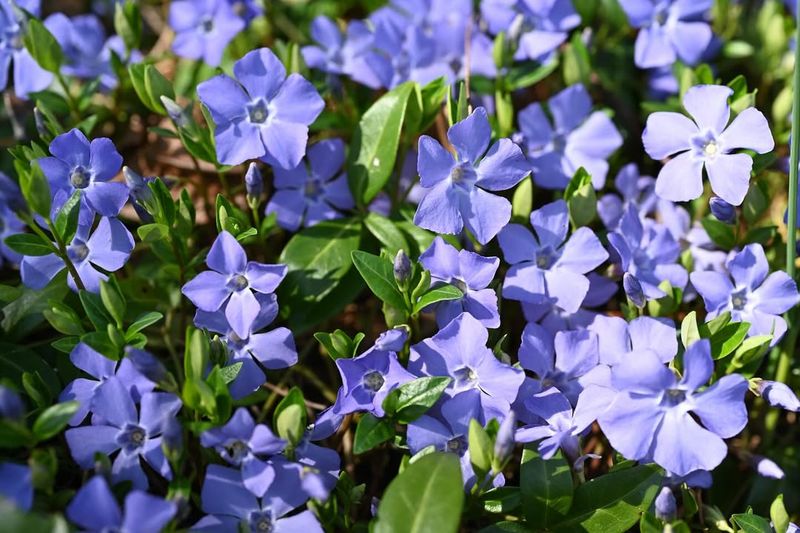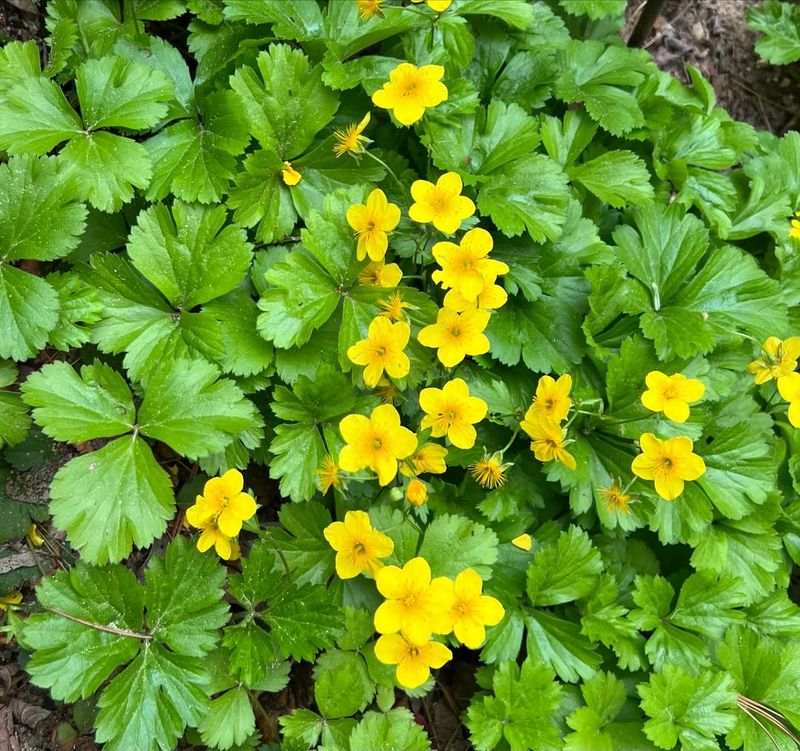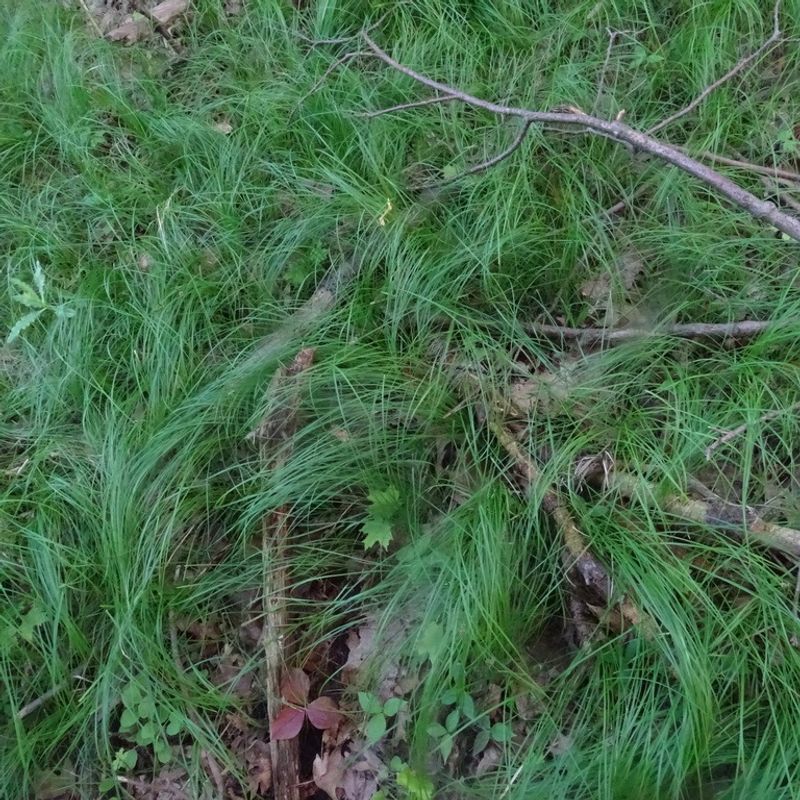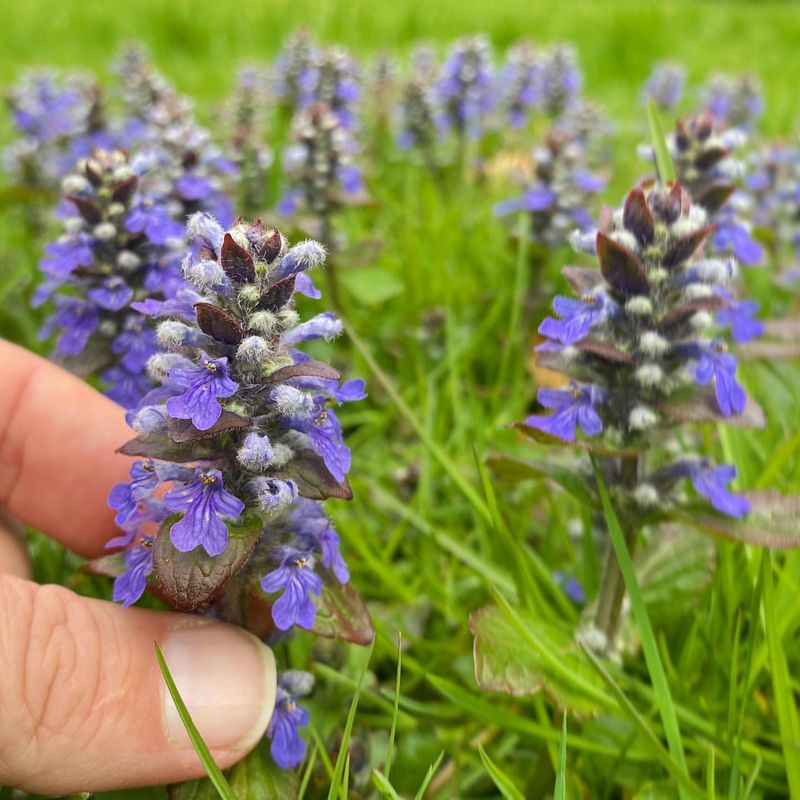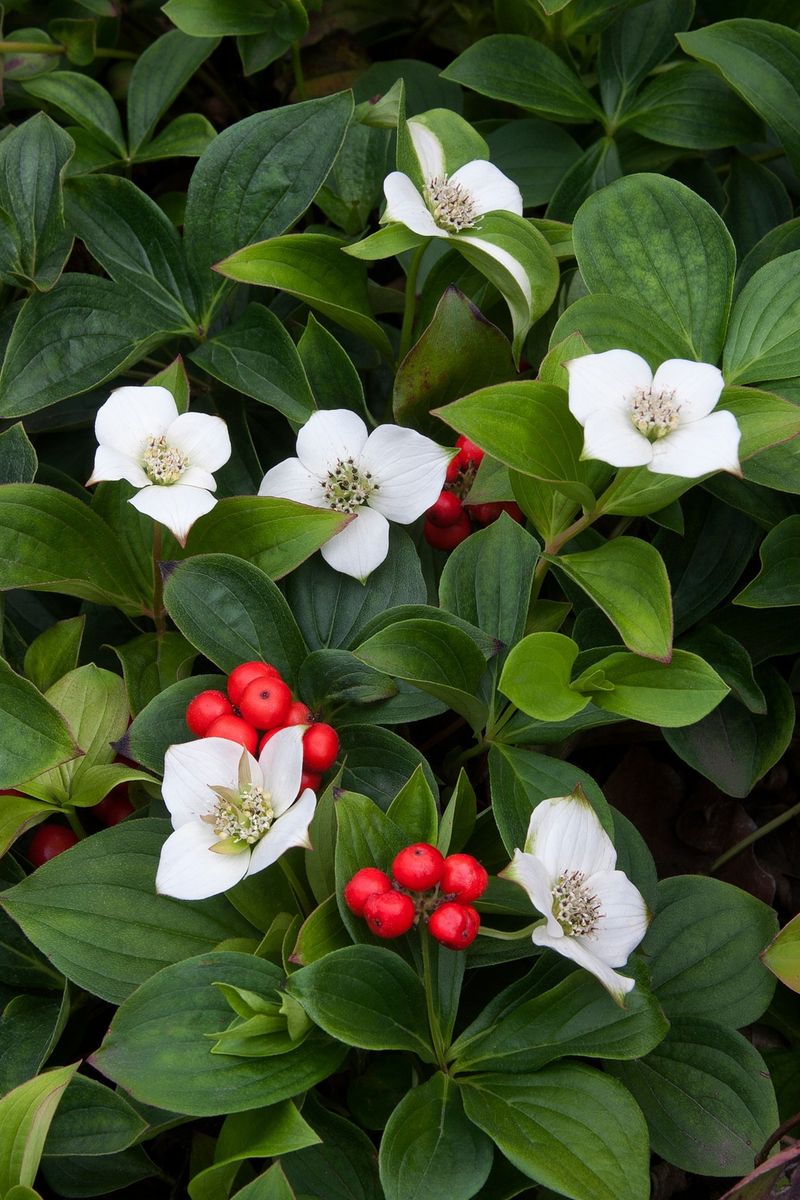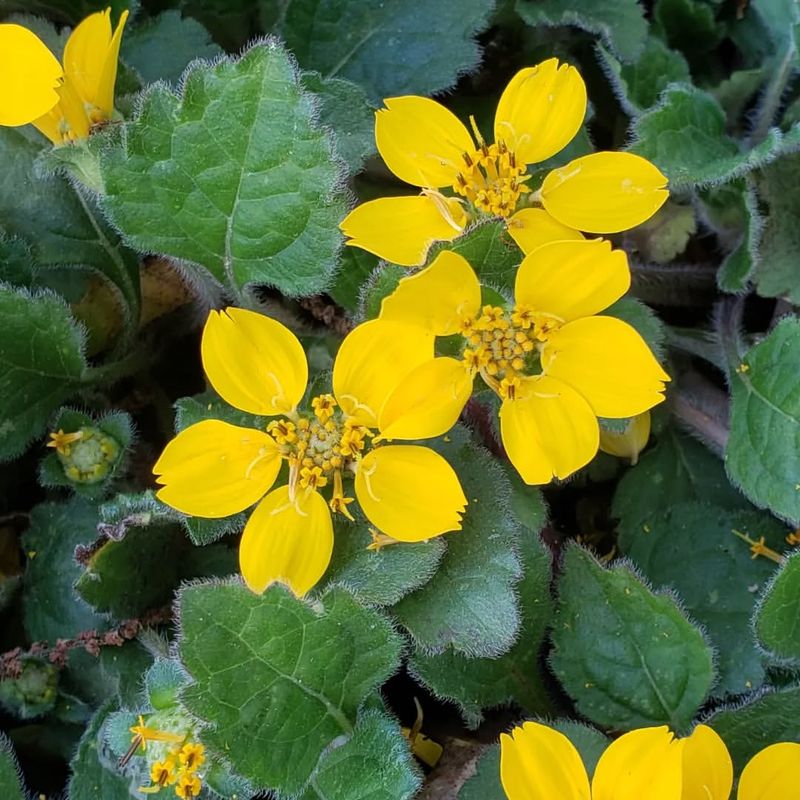Grass can be stubborn, patchy, and way too needy for the time it takes to keep it looking decent. In Connecticut, you’ve got smarter options. Ground cover plants stay lush, handle tricky spots like shade or poor soil, and spare you the weekend mowing routine.
If you’re ready to trade the upkeep for a fuller, greener yard, these plants are ready to outshine your lawn.
1. Creeping Thyme
Imagine walking barefoot on a carpet of tiny purple flowers that release a delightful lemony scent with each step. Creeping thyme creates exactly this magical experience in your yard.
This drought-resistant ground cover grows just 2-3 inches tall but spreads quickly to form dense mats that choke out weeds. Connecticut gardeners love it for pathway edges and between stepping stones.
2. Wild Ginger
Native to Connecticut’s woodlands, wild ginger offers heart-shaped leaves that create a lush green carpet in shady spots where grass struggles. The unusual maroon flowers hide beneath the foliage, attracting curious woodland pollinators.
Hardy and deer-resistant, this plant slowly spreads through underground rhizomes. Once established, it requires almost no maintenance and stays evergreen in mild winters.
3. Bearberry
Tough as nails yet surprisingly beautiful, bearberry transforms problem slopes into eye-catching landscapes. The leathery green leaves turn bronze-red in fall, creating seasonal interest even after the small white spring flowers fade.
Red berries appear in late summer, attracting birds while the plant’s spreading habit naturally controls erosion. Perfect for sandy or rocky Connecticut soils where little else grows, bearberry thrives in full sun with minimal care.
4. Sweet Woodruff
Sweet woodruff’s star-shaped leaves form whorls around delicate stems, creating a fairy-tale woodland scene in shady Connecticut gardens. Come May, tiny white flowers appear like a dusting of snow above the foliage.
Medieval Europeans used this fragrant herb to freshen homes and flavor May wine. The leaves release a sweet hay-like scent when crushed or dried. Spreading steadily but not aggressively, it’s perfect under trees where grass fails.
5. Pachysandra
Gardeners facing deep shade challenges often discover pachysandra as their solution. This evergreen perennial creates a tidy blanket of glossy leaves that maintains its rich green color year-round in Connecticut gardens.
Small spikes of white flowers emerge in spring, adding subtle beauty. Once established, pachysandra forms a virtually maintenance-free carpet that effectively suppresses weeds and prevents soil erosion, even on slopes where mowing would be difficult.
6. Moss Phlox
Spring in Connecticut bursts into color when moss phlox carpets the landscape with vibrant pink, purple, or white blooms. The needle-like foliage forms a tidy, cushiony mat just 4-6 inches tall that spills beautifully over walls or rocks.
Thriving in poor, dry soils where grass struggles, this native plant attracts early pollinators. After flowering, the evergreen foliage continues providing ground coverage, preventing weeds and erosion while requiring minimal water.
7. Foamflower
Foamflower earns its charming name from the frothy white flower spikes that dance above maple-shaped leaves in spring. Native to Connecticut’s woodland edges, this semi-evergreen perennial thrives where grass struggles in dappled shade.
The leaves often develop beautiful burgundy veining or fall coloration. Deer typically avoid this plant, making it perfect for woodland gardens. Spreading gently through runners, foamflower creates natural-looking patches that blend beautifully with ferns and other native plants.
8. Vinca Minor
Vinca’s glossy evergreen leaves create a dense carpet that stays attractive through Connecticut’s changing seasons. Small periwinkle-blue flowers appear in spring, dotting the landscape with cheerful color when many plants are just waking up.
Hardy and adaptable, vinca thrives in partial shade to full sun. Its vigorous growth habit makes it ideal for controlling erosion on slopes. For gardeners battling difficult areas where grass refuses to grow, vinca offers a low-maintenance, drought-tolerant solution.
9. Barren Strawberry
Don’t let the name fool you – there’s nothing barren about this charming native ground cover! Bright yellow flowers resembling tiny strawberry blossoms appear in early spring, creating a sunny display when the garden is just waking up.
The strawberry-like leaves form a tidy, weed-suppressing mat just 3-4 inches tall. Perfect for Connecticut rock gardens or border edges, barren strawberry thrives in poor soil and partial shade. Unlike true strawberries, it won’t take over your garden.
10. Pennsylvania Sedge
Looking for a grass-like alternative that actually thrives in Connecticut’s woodland shade? Pennsylvania sedge creates the perfect natural-looking lawn substitute with its fine-textured, arching foliage. Native to our region’s forests, this sedge forms soft, flowing carpets that need mowing just once annually, if at all.
Deer rarely browse it, and once established, it requires no fertilizer or irrigation. The root system helps prevent erosion on slopes too steep for conventional mowing.
11. Ajuga
Ajuga transforms problem areas with its stunning color combination – glossy, often purple-tinged foliage topped by spikes of brilliant blue flowers in spring. Also called bugleweed, this fast-spreading ground cover creates a weed-suppressing carpet in just a season or two.
Connecticut gardeners appreciate its ability to grow in almost any light condition from full sun to deep shade. The evergreen leaves provide winter interest when many plants disappear. Deer and rabbits typically leave ajuga alone, making it ideal for problem areas.
12. Allegheny Spurge
Meet the native woodland alternative to imported pachysandra! Allegheny spurge creates a similar evergreen carpet but with more interesting seasonal changes – new growth emerges with bronze tints and white flower clusters rise above the foliage in spring. Perfectly adapted to Connecticut’s climate, this plant thrives in the dappled shade of deciduous trees.
The leaves develop beautiful mottling as they mature. More restrained than its Asian cousin, Allegheny spurge spreads slowly to form natural-looking drifts in woodland gardens.
13. Creeping Juniper
Tough enough to handle Connecticut’s coastal conditions yet attractive enough for showcase gardens, creeping juniper solves difficult landscaping challenges. The blue-green needles form a dense, weed-suppressing mat that stays colorful year-round.
Perfect for sunny slopes where mowing is dangerous and grass struggles, this evergreen spreads to about 8 feet wide while staying just 6-12 inches tall. Salt-tolerant and drought-resistant once established, creeping juniper thrives with almost no maintenance in poor, rocky soils.
14. Partridgeberry
Tiny but mighty, partridgeberry creates a woodland carpet just 2 inches tall with shiny, evergreen leaves that add year-round structure to Connecticut shade gardens. Delicate white flowers appear in pairs during spring, followed by bright red berries that persist through winter.
Native to our forests, this plant supports local wildlife while requiring minimal care. The trailing stems root as they spread, making it excellent for erosion control. Unlike many ground covers, partridgeberry grows so slowly it never becomes invasive.
15. Epimedium
Gardeners with dry shade under trees often discover epimedium as their salvation. Known as ‘fairy wings’ for its delicate spring flowers that dance above heart-shaped foliage, this tough perennial thrives where other plants fail.
The new growth often emerges with bronze or red tints in spring. Some varieties keep their leaves through winter in protected Connecticut gardens. Drought-tolerant once established, epimedium’s rhizomes slowly form a weed-suppressing mat that deer rarely damage.
16. Bunchberry
Looking like miniature dogwood trees just inches tall, bunchberry creates a woodland carpet that celebrates all seasons. White flower bracts in spring give way to bright red berries that attract birds to Connecticut gardens.
The whorled leaves turn burgundy in fall, adding autumn interest. A native plant adapted to our region’s acidic woodland soils, bunchberry grows where lawn grass fails completely. It spreads slowly through underground stems to form natural-looking colonies in dappled shade.
17. Green-And-Gold
Cheerful yellow star-shaped flowers rise above velvety, semi-evergreen foliage in this native Connecticut ground cover. The “gold” refers to the bright blooms that appear from spring through fall, while “green” describes the attractive scalloped leaves.
Forming a dense carpet 4-6 inches tall, green-and-gold thrives in partial shade where grass struggles. Deer typically avoid browsing it. The plant spreads steadily but not aggressively through underground stems, eventually creating weed-suppressing patches that require minimal maintenance.

